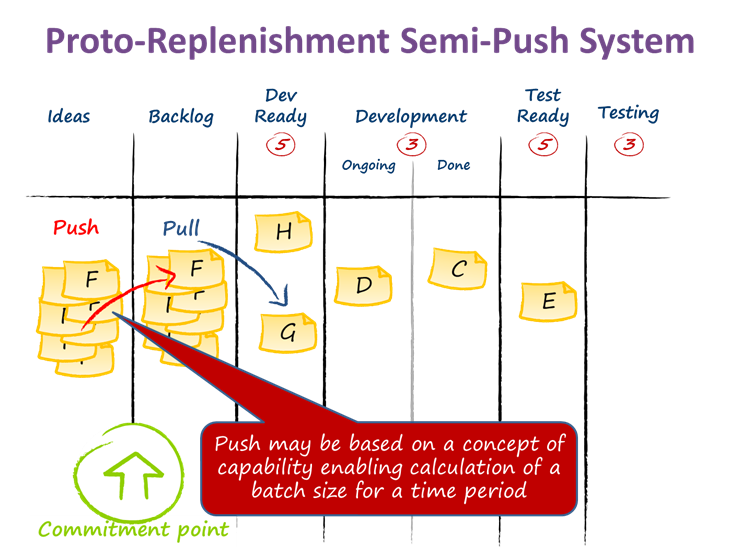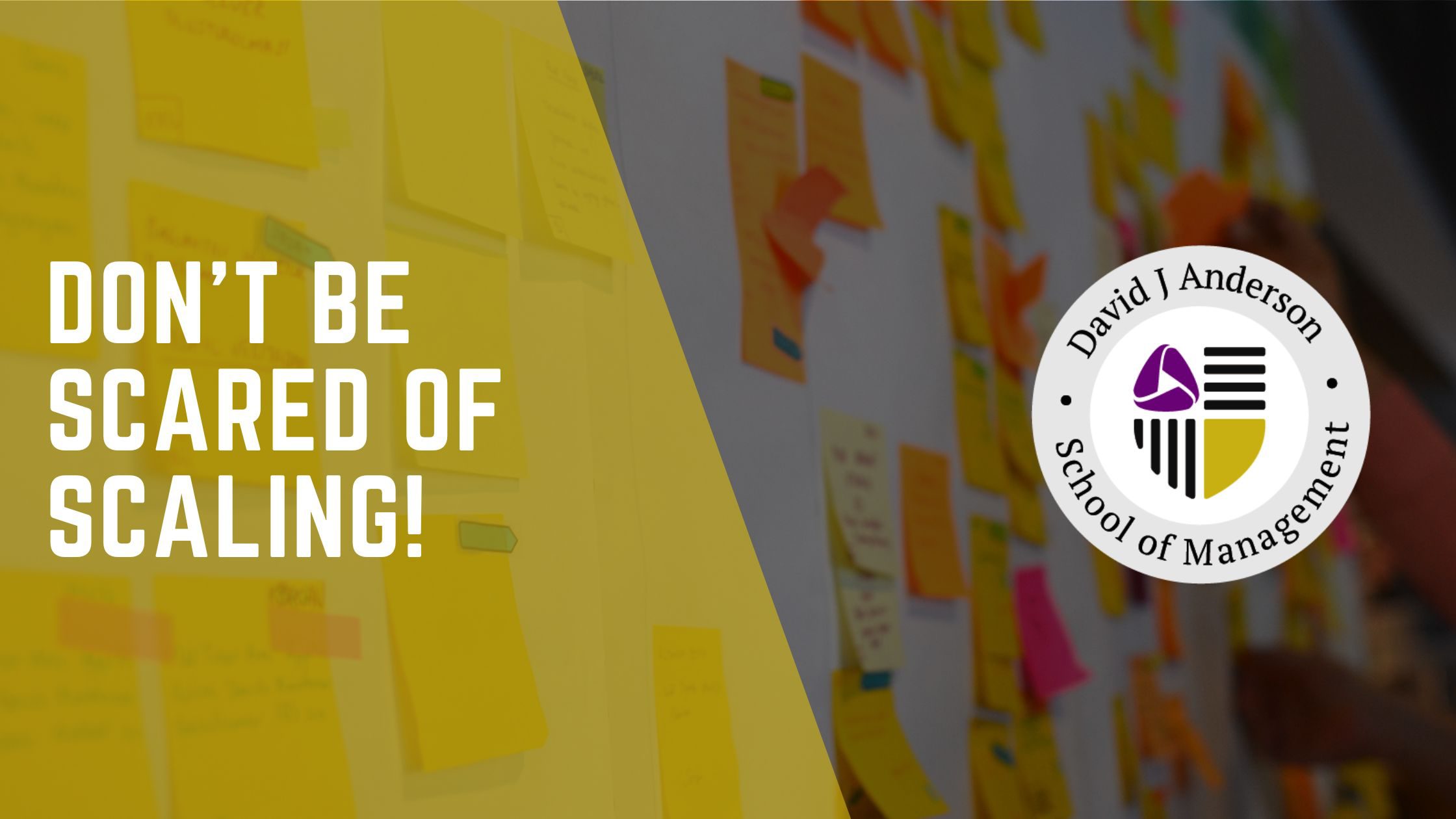Proto-Replenishment Kanban Systems
There is a class of replenishment meeting which I believe we need to call out and name separately. In these replenishment meetings the backlog is already committed and often already prioritized. I am proposing we label these proto-replenishment meetings. This post explains why and asks whether the name proto-replenishment is appropriate or not…
Proto-Replenishment Semi-Push System

Read more…
The job of replenishing the kanban system is somewhat trivial, generally inwardly facing and selection is often based on technical, resource, skillset, or coordinating delivery dependencies to facilitate flow. In other words, replenishment is more about “definition of ready” and selecting based on readiness, than it is about commitment, scheduling and sequencing of work from a business risk perspective. The pool to select from is referred to as a backlog and it is already committed. There is already an agreement with the customer that the backlog items are in-scope and must be delivered.
Full replenishment meetings as described in the Kanban (blue book) feature the customers (service requestors), work items submitted are not committed, instead the collection of them represents a pool of options. The replenishment features the selection of items from the pool and discussions around appropriate scheduling and sequencing of items.
The replenishment meeting features the act of commitment. There is genuinely deferred commitment until the kanban system replenishment and a proper pull system is in operation. Customer work is pulled based on capacity signaled by kanban in the system. At a full replenishment meeting customers are present and make the decisions. The focus is external and outward-looking and decisions are made on the immediate business impact of delivery: the cost of delay is a key influence on decision making.
Deferred Commitment Pull System

In these other forms of replenishment, see diagram below, the work has been pushed, perhaps in large batches, perhaps based on a belief, or mathematical understanding of capability but nevertheless pushed into the system. Commitment is not deferred. Commitment is made early at the point the batch is pushed. This is common for large projects. When we are using Kanban with a large project, the project typically has a committed backlog. The kanban system replenishment meetings are simply about selecting work to flow through the project workflow.
The main task is sequencing and typically, technical, delivery, and resource risks are the main inputs to the selection process. At these alternative replenishment meetings, customers are seldom if ever-present, the attendees are almost entirely from the delivery side. The focus is internal and the decision making is influenced by internal concerns.
Proto Replenishment Semi-Push System

So these meetings are different. They clearly represent a less mature, and shallower implementation of Kanban. The question is whether they should be labeled “proto-replenishment” or whether we need another alternative name? Proto-Kanban is an established term, usually used to refer to Kanban Boards without WIP limits, though other variants exist. The term was coined by Richard Turner, of the Stevens Institute, because the case study literature showed that these proto-Kanban implementations often matured into full Kanban implementations later. Hence, these boards without WIP limits were evolutionary predecessors of Kanban and the suffix “proto” indicates an expectation that they are a seed from which something more mature may develop.
The question is whether proto-replenishment is appropriate or not? I believe it is. Generally, proto-kanban implementations are inwardly facing and they are often at what Klaus Leopold labeled Flight Level I & II. When a kanban system is designed in an outwardly facing fashion asking the questions, who are our customers? And what do they request from us? Then we typically see much deeper implementations including WIP limits, pull and classes of service. However, getting from proto-replenishment to full replenishment will not happen without leadership. This transition highlights the true crux of Kanban implementation. If you can get beyond proto-replenishment then you have implemented a pull system. This is a non-trivial step. It is the non-trivial step that Kanban Coaching Professionals (KCPs) are trained to help you take.
Recognizing proto-replenishment as a concept introduces a whole new way to understand and teach improving depth of Kanban and tuning implementation to organizational maturity. It will enable coaches and change agents to point out a lack of deferred commitment and the associated business risks that early commitment carries with it. It also gives another very clear and simple test for “are we doing Kanban or not?” To have truly implemented Kanban your replenishment meetings will involve customers, you won’t have a backlog, you will have a pool of options, and commitment will be made at the replenishment meeting as you pull work into your kanban system. If that isn’t happening you are still in the proto-kanban stage and have a lot more opportunity ahead of you.




